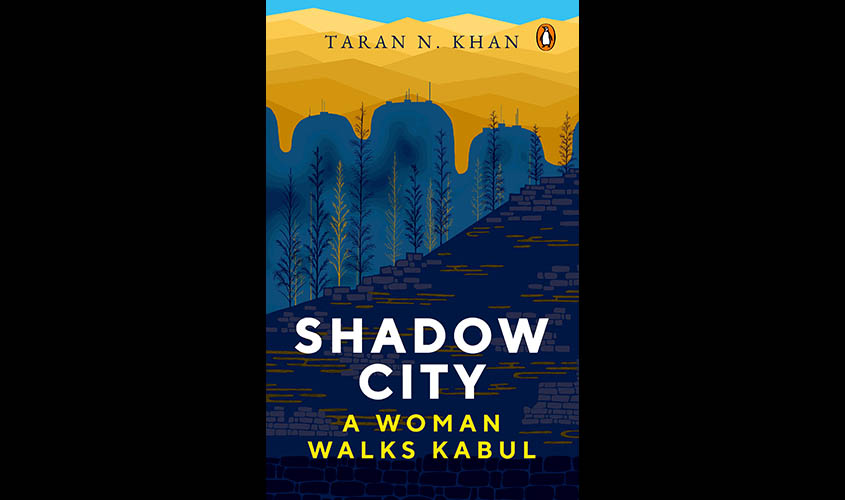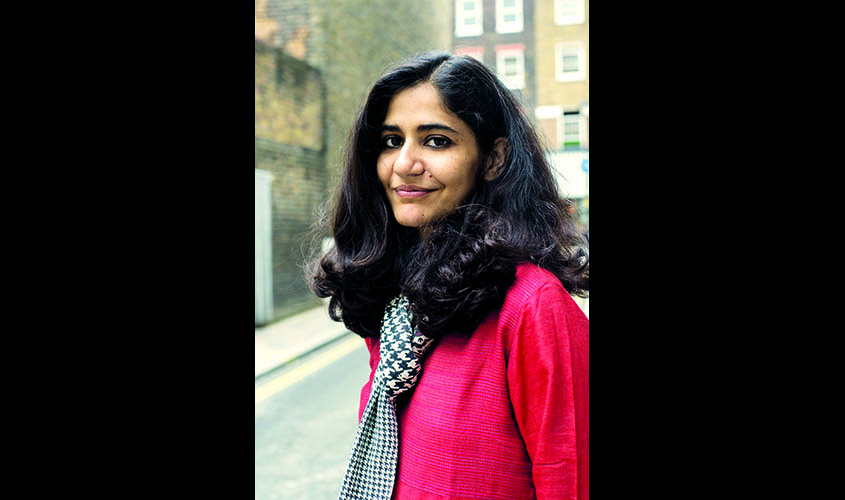Over the last few decades, the Afghan capital Kabul has been at the centre of a geopolitical power grab that continues to this day. But amid the ruins of war and anarchy, there are always signs of normal life, of everyday rhythms in the city. In her recently published book, Shadow City, author and journalist Taran N. Khan offers glimpses of both these aspects of Kabul: the ordinary and the world-historical. Presented here is an excerpt.
Kabul appeared, from the road or the sky, announcing its proximity with the unfolding of graveyards.
First as vast, panoramic swathes that covered entire hillsides. Later, as the city grew closer, passing in smaller flashes, squeezing into the gaps left by the living. Or perhaps it was the other way round and the city had insinuated itself into the spaces between the tombstones. Either way, the dead were as much a part of the landscape as the living, providing one of the few points of stability in a constantly changing terrain. Standing in the middle of Kabul’s streets, I could look up and see, like waves rising on the horizon, layer after layer of its dead, lost in their eternal sleep as the city expanded around them.
Paths emerged through these markers, like secret passages leading across the hills and in between homes. As I walked the streets of Kabul, I saw women taking shortcuts through graveyards. Children carried water to their homes in the mountains following these lanes. People stopped to exchange salutations in the shade of the trees that spread over gravestones. There were graves next to houses and in the middle of markets, forming an island in the middle of a busy thoroughfare or providing a respite in the upward climb to dwellings on the hills. They were a part of the city’s terrain, its everyday rhythms, in a way that was unfamiliar to me.
In Aligarh, the graves remained within the orderly spaces allocated to them, and any interaction with these spaces was governed by strict protocol. For instance, as I was taught as a child, it was polite to offer greetings when crossing a cemetery. To be disrespectful invited retribution. If you walked over graves, the dead lamented as your steps sounded over their heads, my cousins told me. Then their spirits would appear in the mirror in the middle of the night and whisper to you until you went mad. “If you step on graves you go blind.” “If young girls cross over graves at dusk they get possessed by evil spirits.” “They curse you so loudly that if you could hear them you would faint.” All these were stories I grew up on in Aligarh, and in Kabul too I heard similar tales. But in practical life, walking through the streets often meant stumbling over some kind of grave.

I learned to distinguish the different ways in which these markers punctuated the earth—from a brief ellipsis of small headstones between densely packed houses and shops to the longer dashes of elevated tombs that appeared up the mountains. The simplest graves were plain mounds of earth marked with small stones. Others were more lasting, with carved headstones. Some were clustered together into family plots, ringed by an iron fence. Some were marked by a green cloth tied to a flagpole. Green is the colour of martyrdom in Afghanistan, and these flags marked the resting places of shaheeds, martyrs of one of the country’s many conflicts. Often, they were the only splash of colour on the bare slopes of hills. It was ironic how picturesque they looked, touched by the mellow sunshine of the Afghan spring, or even whipped by Kabul’s notoriously dusty summer winds. From a distance, they resembled some strange and terrible variety of tree, evergreen and hardy, that flourished particularly well in this soil.
And then there were the grander ziyarats, or shrines, often located within graveyards, or sometimes as solitary mausoleums. These were the graves of Kabul’s patron saints, holy souls who watch over the city. Many Kabulis offer aqeedat, devotion, to one or more of these saints. They are visited to seek cures or blessings, to drive away troubles or to secure joys. Several such ziyarats dotted the mountains around the outskirts of the city, or were hidden away in the narrow streets of its old quarter.
These varying formations of graves across the city eventually pulled my steps towards the cemeteries themselves. The rise and fall of markers and memorials in these spaces seemed to offer a story written into earth that could only be read by walking.
Over time, this web of memorials turned out to be far larger than I had supposed. I found that the paths I wandered in these cemeteries were like veins—leading to the many shades of loss that run through Kabul. The city is marked by absence, of which a plot in a cemetery is merely the simplest manifestation.
***
One of the more orderly graveyards in Kabul lies in a locality called Sherpur, in the shadow of two colonial-era wars. Because it is the only burial ground for Christians in the city, it is a spot occupied largely by those who came from elsewhere. Within its walls lie soldiers as well as hippies, engineers as well as explorers. People who came to Kabul for various reasons, and never left. The Qabre Gora, or “Graveyard of Foreigners”, as it is colloquially known, is located a short walk from the Sherpur crossroads. The name of the locality carries the memory of a shadow city. In the 1870s, the Afghan ruler Amir Sher Ali Khan had planned his new capital Sherpur here, away from the already crowded old city. The new dwellings were to be centred around a fortress (a “New Bala Hissar”), and would house the court elite and administration. As it happened, only the military installations were built before the second Anglo-Afghan War overtook the amir’s plans in 1878. The British troops used these very installations for shelter that winter. Years later, Amir Amanullah flattened the remains of the constructions to build Kabul’s first airfield.
After 2001, this land—belonging to the Ministry of Defence—acquired commercial value as Kabul’s real estate prices boomed. In 2003, bulldozers demolished mud houses and evicted the families who lived there. The land was parcelled out to powerful figures and their relatives, which included former militia commanders, senior government officials and ministers. This alleged “land-grab” caused protests among citizens as well as by the Afghanistan Independent Human Rights Commission (AIHRC). But the international community and representatives of foreign embassies, which lay a short walk from the site, mostly remained silent. For many Kabulis, these events were an early indication of how things would go wrong in the coming years. They also signalled how this new cycle of change was underlaid by the old patterns—impunity for the powerful, and silence from their foreign allies.
Soon, massive mansions came up in Sherpur, which were rented at exorbitant rates by the people who could afford them: foreign contractors, aid organisations or consultants, media houses. In magazines and websites aimed at expats, I would come across advertisements for these poppy palaces: “Forty rooms, underground parking for twelve cars, good security.” The scale and brazen style of these structures made them architectural displays of impunity. Many Kabulis referred to this area as “Chorpur”, the village of thieves. Each time we took that route to get to work, my driver Abdullah would say, “Look, Taran, very bad place, full of badmash [crooks].”
Abdullah knew these streets well. Before he started driving for expats like me (that is, after 2001), he had been a taxi driver. And he had never left the city. Not even for a night, he said in reply to my persistent questioning. The only trip he had taken in nearly forty years had been to Ghazni, to attend a wedding. He had returned to Kabul the same day. Each time I was in his car, I would listen to the only station he tuned in to—Radio Ahmad Zahir—which played the legendary Afghan singer’s repertoire day and night. Once I asked Abdullah what the biggest difference was now from driving during the Taliban years. “The silence,” he said. “The streets were completely quiet then.” There were few cars around and Abdullah’s taxi was often flagged down by the guards stationed at crossroads, and examined for cassettes and other contraband. If they found any, they would pull out the spools and throw them on the road. That was the only sound you heard, Abdullah said. The rustling of the magnetic film that had been extracted from the disembowelled tapes, sighing as they were thrown around the streets, hanging off the trees and electricity poles. Maybe they looked like the flags fluttering over graves.
Excerpted with permission from Shadow City: A Woman Walks Kabul, by Taran N. Khan, published by Penguin Random House

